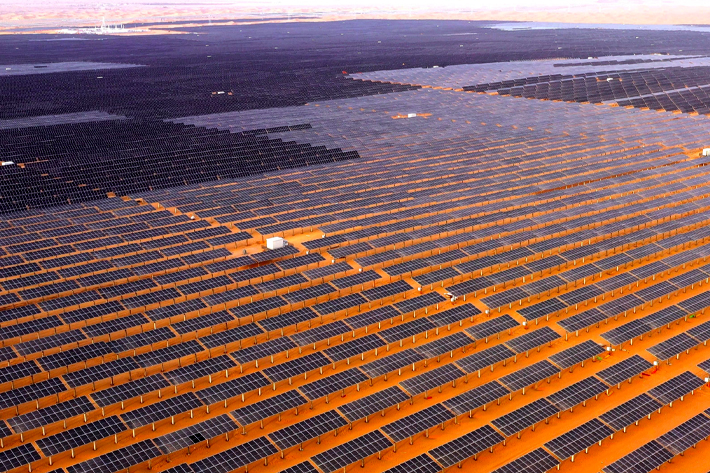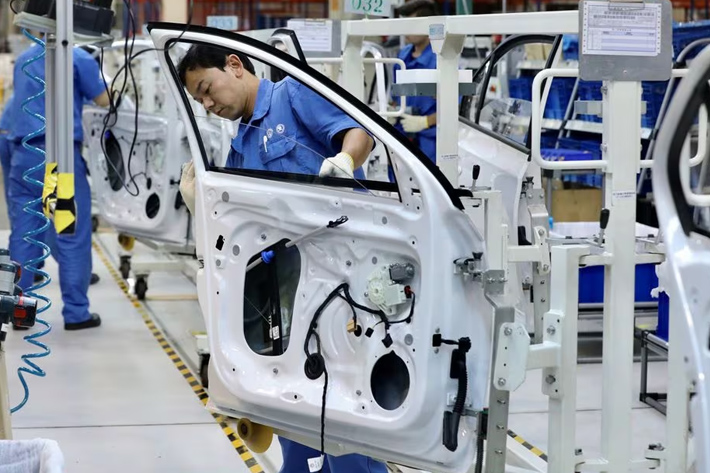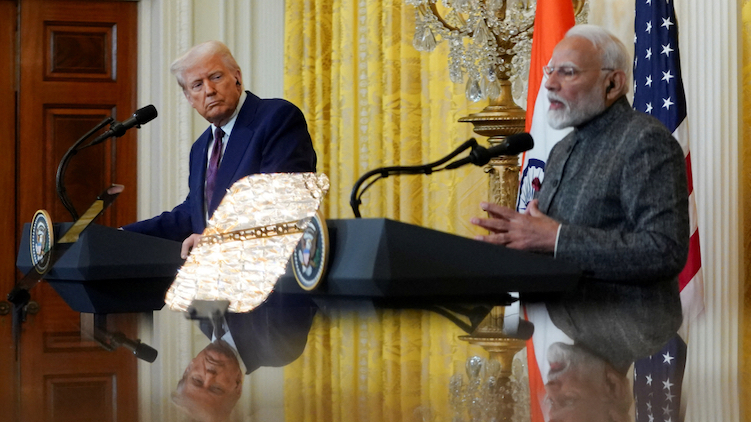China has installed cumulative solar power that totals more than 1 terawatt, according to its National Energy Administration.
The NEA said solar capacity reached 1.08 TW, or 1,080 gigawatts, at the end of May 2025, according to a report by PV Mag, which documents the world’s extraordinary transition to solar. (One TWh is a unit of energy that represents one trillion watt hours).
China has been leading the global energy transition by a huge margin, and that lead looks set to grow, given the Trump Administration plans to terminate most of the subsidies for renewable energy his predecessor imposed.
ALSO SEE: Floods Swamp Cities in Southwest China, And More Storms Due
China’s total power generation capacity was 3.61 TW at the end of May, up nearly 19% from last year, according to NEA data, the report said, after 197.85 GW of new solar installations were added in the first five months of this year.
That included a formidable 92.92 GW in May alone, which is reportedly the highest monthly addition ever.
The surge stemmed from favourable government policies which caused a rush to complete installations ahead of policy changes in the second half of the year, it said.
Push for energy self-sufficiency
Chinese leader Xi Jinping has pursued a strategy of energy self-sufficiency in the 12-plus years since he took power, after recognising that the country’s dependence on oil and coal imports was a national security weakness that could be targeted if a rival nation moved to block supply channels such as the Malacca Strait.
Xi ordered energy officials to “revolutionise” the country’s energy system in the middle of 2014, which he reportedly damned as “technologically backward,” according to a report by the Financial Times last month.
That led to the spending of hundreds of billions of dollars on the national power grid, plus similar amounts in clean tech via both state developers and private companies.
China’s embrace of solar and wind power, plus ramped-up electrification spurred rapid growth in the manufacturing of solar panels and firms making wind turbines, as well as fast trains and electric vehicles.
And many of those industries have been a key factor in the country’s recent economic growth. Clean energy sectors now account for about 10% of gross domestic product, according to the Helsinki-based Centre for Research on Energy and Clean Air.
But the heavy hand of China’s communist system often appears to sweep its citizens to the side, while creating intense rivalry and ludicrous levels of overcapacity in a range of sectors – along with increasing pushback from trading partners all around the world.
Surge of coal plants & extreme weather
China’s energy transition is vital for the planet, given that it is the biggest producer of greenhouse gases. Indeed, it is still building a troubling amount of new coal-power plants – allegedly the most in a decade – and “continues to finance coal projects abroad despite a 2021 pledge from Xi that it would stop,” the FT said.
However, its progress in electrification means it should see a significant drop in emissions once it begins to phase out coal, which is still the biggest source of power for its electricity grid, despite the huge surge in solar and wind.
Energy officials have said that from this month new renewable projects will be subject to market pricing. Analysts say competitive electricity markets are an important move, but have warned it could cause short-term impacts on large renewable projects as investors assess new prices in their plans.
With the shift to renewables and EVs, China’s big cities such as Beijing and Shanghai have enjoyed far cleaner air, but the relentless drive to electrify has led to a wave of extreme weather incidents, which have created nightmares for citizens in coastal cities now regularly battered by super-typhoons and sudden floods.
Over the past week, floods swamped cities in Guangdong and Guizhou, creating landslides that damaged highways and other infrastructure. And this is now part of the wet season pattern.
Extreme weather events related to climate change caused economic losses of more than $32 billion for China in the third quarter of last year.
Half of the country’s power is expected to come from low-carbon sources by 2028. Yet leading climate scientists have warned that the world is “doomed to breach the symbolic 1.5C warming limit” by that time.
Climate change has already worsened many weather extremes and ocean temperatures have warmed so much that few marine reefs have survived without coral bleaching.
In 2020, scientists estimated that humans could only emit 500 billion more tonnes of carbon dioxide, the key planet-warming gas, for a 50% chance of keeping warming to 1.5C. But by this year, this “carbon budget” had shrunk to 130 billion tonnes, according to a new study.
“If global CO2 emissions stay at their current highs of about 40 billion tonnes a year, 130 billion tonnes gives the world roughly three years until that carbon budget is exhausted,” the BBC reported last week.
So, the bigger question is, can China – and other big coal users – cut their CO2 emissions within that timeframe?
Asia warming up faster
Some climate analysts fear that China’s race to expand its electrification runs the risk of creating more problems than solutions – for both itself and many of its neighbours, given that the World Meteorological Organisation said this week that “Asia is currently warming nearly twice as fast as the global average.”
“Sea level rise on the Pacific and Indian Ocean sides of the [Asian] continent exceeded the global average, heightening risks for low-lying coastal areas,” it said.
Asia is heating up faster than other parts of the world, and as well as creating more extreme weather events, that could spur negative impacts from rising sea levels.
A study in April last year found about a quarter of China’s coastline will be lower than sea level because of land subsidence and projected sea level rise. Tianjin, Shanghai and areas around Guangzhou were significantly exposed to both issues, the study found.
- Jim Pollard
NOTE: Further details and links were added to this report on June 26, 2025.
ALSO SEE:
Firms Underestimating Risks From Carbon-Fuelled Climate Change
Carbon Removals Not Growing Fast Enough For Climate Goals
Climate Change Has Cost China $32 Billion in Just One Quarter
Floods or Drought: Climate Change Worsens Global Water Woes
China’s Billion-Ton Coal Expansion Plan Sparks Methane Fears
LNG’s Carbon Footprint 33% Bigger Than Coal’s – CC
Forest Fires a Double Whammy for Climate Change Fight – Guardian
Continued Fossil Fuel Investments Put $557 Trillion ‘At Risk’
Scientists Fear Nature’s Carbon Sinks Are Failing – Guardian
China Coal Output Rises But Power Generation Use Declines
Climate Change ‘Fuelled’ Rain That Led to Fatal Indian Landslides
Energy Emissions Set to Peak But ‘Not in Time’ For Climate Goals























